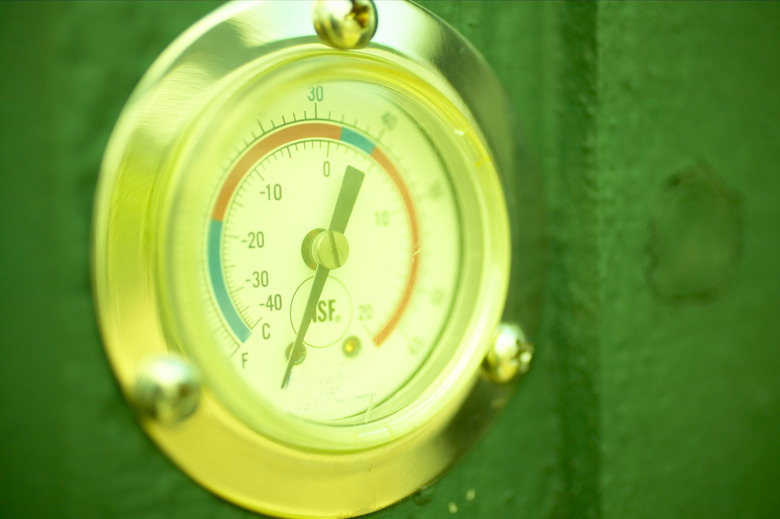There are two primary properties of air that can be measured: flow and pressure. Barometers measure pressure, while there are several different techniques you can use to measure flow. Chemical smoke, or a wind velocity meter, is often used to measure air flow. Volume can also be measured, but this measurement is usually coupled with a measurement of pressure.
Air Flow
The specific ways to measure air flow vary depending on whether the speed or the direction of the flow is the most important factor. In the book “The Measurement of Air Flow,” authors R. C. Pankhurst, Ernest Ower explore different ways of measuring air flow when different variables are being studied. If air is being re-routed through a particular environment, such as an office, a study which emphasizes the way air moves through a particular set of obstacles would be useful. Being able to “see” how the air moves is therefore important. The use of chemical smoke is helpful, as the smoke moves along the natural air pathways. If the air flow is being hindered by a large object, the chemical smoke will clearly demonstrate this. If the speed of the air flow is the most important factor, then different equipment, such as a wind velocity meter, can be used to measure the flow. In this instance, chemical smoke is merely decorative; the wind velocity meter must be used to document the actual speed of the flow.
Air Pressure
As described in “Meteorology: The Atmosphere and the Science of Weather,” published in 1994, air pressure is generally measured using a barometer. Barometers work by measuring how far liquid can rise within a tube containing a vacuum. The heavier the air pressure, the more the liquid can rise. Therefore, a lower barometric reading indicates a much lower air pressure, and generally predicts the arrival of a storm system.
Air Volume
Pressure plays a major part in measuring the specific volume of air. To measure the volume of any gas, first determine the density of the gas, which corresponds directly to how hot or cold the gas is. A hotter gas is less dense; therefore, a cubic foot of hot air will have less density than a cubic foot of cold air. An excellent way to visualize this is a hot air balloon. Because the hot air is less dense, it rises above the cooler, denser air surrounding it. The “specific” volume of the air refers to the combination of pressure and humidity. Determining each of these factors will allow you to determine the molecular density of the air, and the corresponding specific volume.

